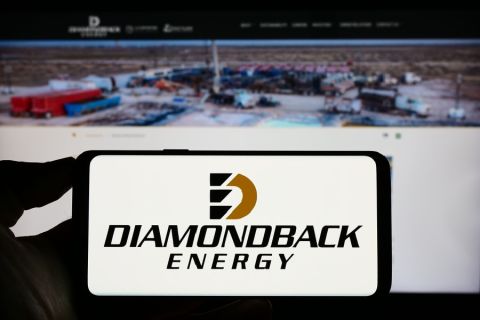Pipeline right-of-way agents are a hardy lot and, thanks to booming shale plays, are in high demand now. As a midstream company seeks to build a new pipeline route, the right-of-way agent is specifically tasked with making sure that construction moves forward with the landowner's permission and to the midstream company's satisfaction. This is no easy feat, as production is at an all-time high, perception of the energy industry is at an all-time low, and construction of pipelines is needed now more than ever.
For example, new infrastructure is needed in the Eagle Ford shale where some wells are producing up to 1,000 barrels (bbl.) of oil per day, and estimated reserves reach some 500,000 bbl. of oil equivalent per well. The Eagle Ford is a noticeably booming area because it appears to produce more oil than other shale fields and it has a much higher carbonate-to-shale percentage, thus making it more brittle and frack-able. As new wells come online, infrastructure is needed. Enter the right-of-way agent.

“People don’t like to think that big bad oil companies are going to come in and take over. It just doesn’t work like that. These companies really do want to stay on good terms with everyone and go out of their way to do so.” — Don Valden, founder and chief executive of Texas Right of Way Associates/TRWA Inc. and American Right of Way Associates/ARWA Inc.
Research and negotiation
As much as this take-away capacity is needed, the process of installing new infrastructure is not always a smooth one, and it's up to the right-of-way agent to make it happen. The right-of-way process and the resultant negotiations with all types of clients can make for an interesting career, according to Don Valden, founder and chief executive of Texas Right of Way Associates Inc. (TRWA) and American Right of Way Associates Inc. (ARWA). With more than 30 years of experience in the oil and gas industry, he has worked in some of the hottest plays, including the Barnett, Haynesville and Eagle Ford shale plays.
"Most often, when you meet people such as landowners, with whom you are going to negotiate, you have to explain the whole process," Valden explains. "People don't like to think that big bad oil companies are going to come in and take over. It just doesn't work like that. These companies really do want to stay on good terms with everyone and go out of their way to do so."
The people who build and operate this infrastructure usually live in these communities, he says. Most often, the hardest task is to educate landowners about the right-of-way process, and let them know that developers are willing to work with them.
A right-of-way agent must work through multiple steps to achieve the goals of his client. To begin, an agent is involved in project planning, title research, due diligence and documentation and engineering-plat acquisition, all of which must be addressed before negotiating an easement with the landowners prior to construction.
Project planning typically involves intensively researching each property and discovering which landowners hold the rights and the title to the property. The title holders must be directly contacted, and the person living on the property must be informed of the impending construction.
"There is a lot of research that has to be done to ensure we know who really owns the property, where the property lines fall, and who actually needs to sign the contract or easement," explains Valden.
Most often, people are amenable to making a deal when it becomes clear that it is in everyone's best interest, says Valden. The majority of the time, the landowner is chiefly concerned with having the land returned to its original state, which is a concern that companies try hard to alleviate.
Landowners are also concerned with safety. "Most don't realize that pipelines are inspected periodically for integrity, and that measures such as cathodic protection are put in place to prevent any accidents," says Valden. "It is the right-of-way agent's job to let the landowners know how safe pipelines are, and why they are a necessity."
Because these companies are often willing to go the extra mile to work with landowners to stay on good terms, midstream companies will often replace fences, grass and even trees. The companies will also pay for a premium for crop lands or help replace and restore wetlands. "It's important to the company that it has good standing with the community," he says.
Survey tales
As with any project, agents must be ready to respond appropriately when plans go awry, says Valden. "On one particular job, there were hobos that would follow after the workers at night. They would steal the wooden survey stakes, placed in the ground to mark where we had surveyed, and use the stakes for firewood. We had to re-survey the area three times before we finally figured out what was going on."
These challenging moments "are when agents need to be quick on their feet"to find ways to overcome obstacles, he says. Once Valden's team discovered what was happening to the wooden stakes, they had security brought in to make sure that the stakes didn't go missing again.
Sometimes even greater measures are needed, he says, recalling another occasion.
"Right after we had finished construction, it rained. The ground that we dug up turned out to have a lot of small rocks buried in it, and the more it rained, the more they rose to the surface, until the land was littered with these white rocks. They were all over the property, and of such a small size that we couldn't pcik them up with the machine we typically use. The company had to send out guys to hand pick up all those larger rocks.
"We promised that farmer that there wouldn't be problems, but there are some situations that come up that you just don't expect. If that means picking up rocks, one by one, to keep the land owner happy, then that's what you have to do."

The trenching crew uses a wheel trencher or backhoe to dig the pipe trench.
How can one plan for such unexpected events? "Really, you just can't," Valden says. "But, as a good right-of-way agent, you can work around them to get pipes into the ground."
Also, because much of rural America is still farmland, savvy farm owners can make the best of a pipeline company's wish to cross cropland by careful planning. Oil and gas pipeline companies often pay a premium for crops that are destroyed before harvesting, and also will pay to re-seed the land, after construction is complete, for the next season.
Ingress and egress
Certain parts of an easement contract are critical. For example, an oil and gas company must have the rights to ingress and egress, or to enter and leave, the property near the pipeline. This important clause allows access by personnel involved with the maintenance of the pipeline.
"There was one instance I was involved with where the ingress and egress clause was left out of the documents by the previous pipeline company that owned the pipeline," says Valden. "It caused a lot of problems for the new company that bought the pipeline. In fact, we had to re-pay the landowner in order to negotiate putting the clause on the contract, so that the company's personnel could come in and check the pipeline."
Unfortunately, some landowners aren't negotiated with so easily. When an agent can't negotiate with a landowner, and can't move the process of construction forward, they might have no alternative than to begin the condemnation process. Most pipeline companies are considered utility companies and, as such, have the right of eminent domain.
"Pipelines and infrastructure are necessary for the continued growth of the energy industry," says Valden. "When land owners fight, they will lose, every time. It's not a good scenario. In all honesty, it's better to work with the right-of-way agent than to fight the process, because both the landowner and the oil and gas company get more out of negotiations."
Despite the challenges, the job of the right-of-way agent is to make sure that negotiations with the landowner are negotiated in good faith and are completed as amicably and fairly as possible.

In many areas, pipelines are buried 36 inches deep, and even deeper for stream or road crossings.
Recommended Reading
Diamondback Prices Senior Notes to Help Cover Endeavor Deal Cost
2024-04-10 - Diamondback Energy’s notes will help cover cash consideration for the pending acquisition of Endeavor Energy as well as repaying debt owed by Endeavor.
GeoPark to Acquire Interests in Vaca Muerta
2024-04-11 - GeoPark Ltd. entered into a binding offer to acquire a non-operated working interest in Argentina’s Neuquen Basin’s Vaca Muerta Formation as it extends its reach across Latin America.
Marketed: Outpost Energy Alberta Properties Divestiture
2024-04-03 - Outpost Energy has retained Sayer Energy Advisors for a corporate sale process on properties in Alberta.
US Proposes Second GoM Wind Lease Auction
2024-03-20 - Combined, the four proposed areas for offshore wind have the potential to power about 1.2 million homes if developed, according to the Interior Department.
Beacon Offshore Divests Non-op Gulf of Mexico Interests
2024-04-05 - Beacon Offshore Energy said that with its non-op assets divested, it would turn all of its focus to its Shenandoah and Winterfell assets in the Gulf of Mexico.



